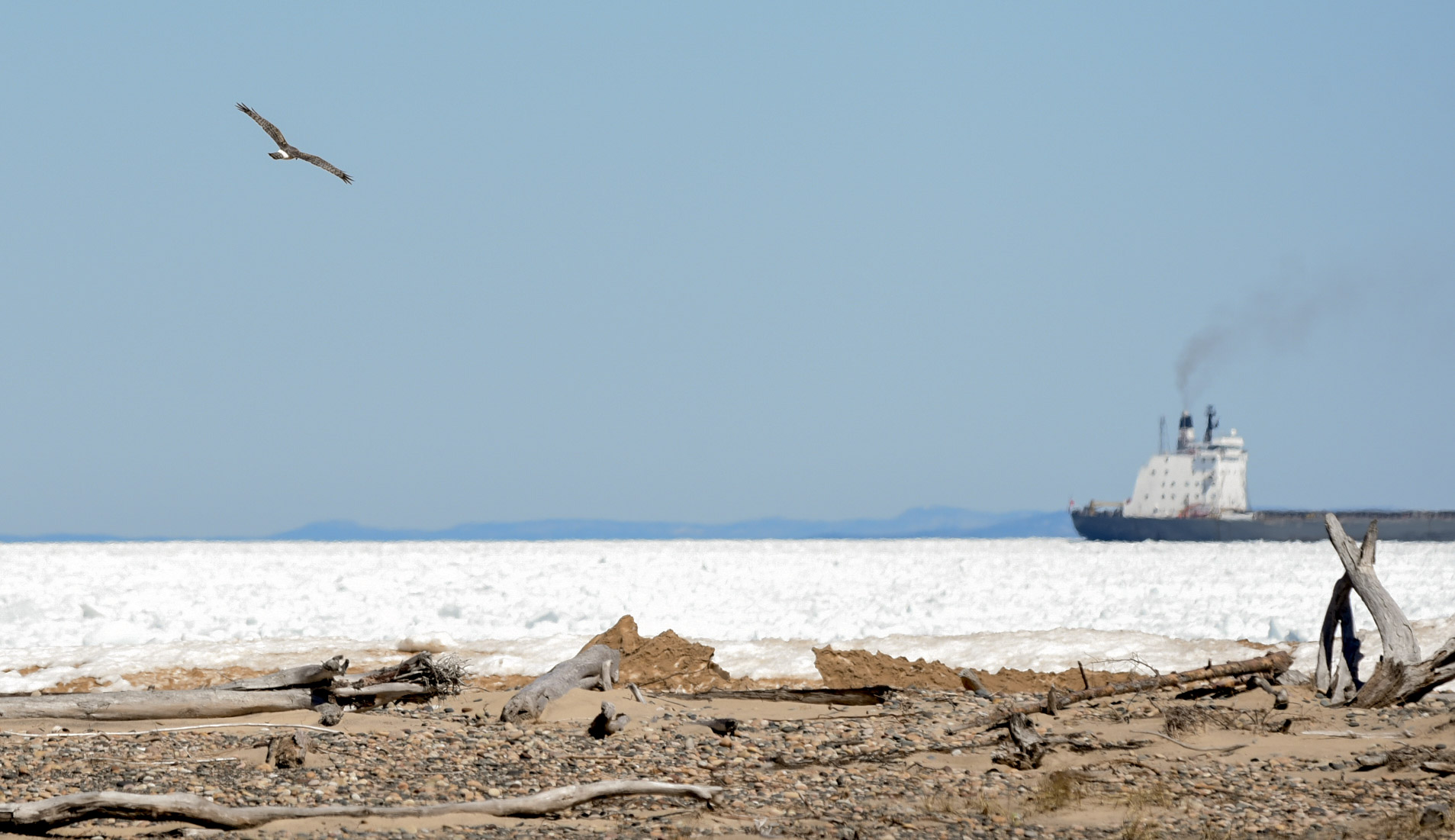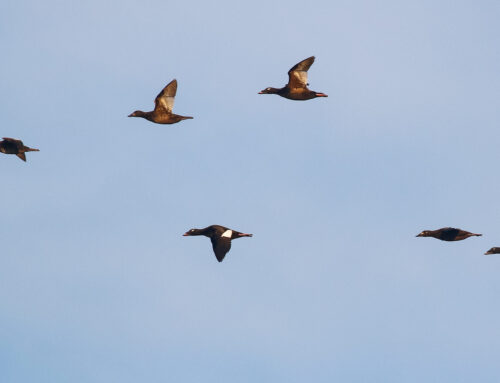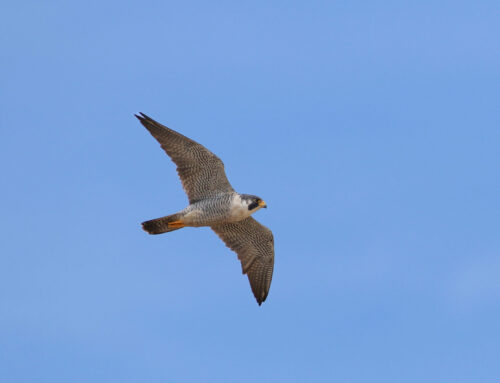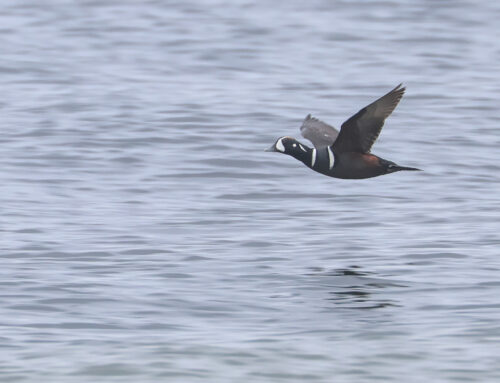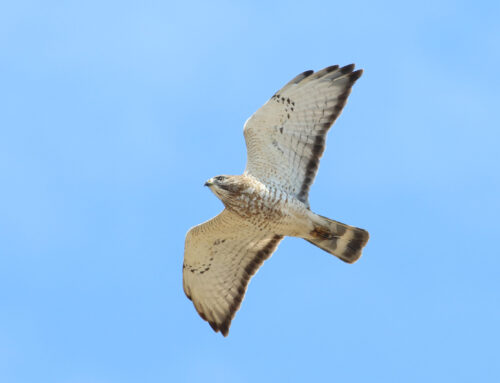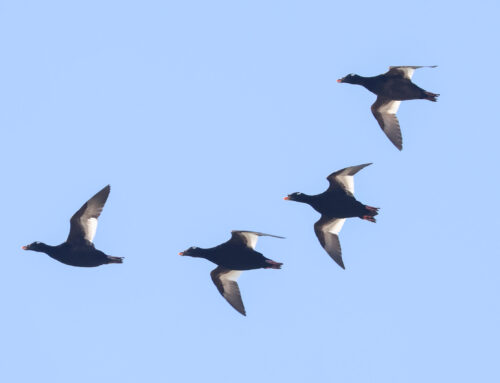A woodcock twitters overhead, squeezing one last display flight into a sky just beginning to color. You do claim this bird as your spring harbinger, I remind myself. It bears repeating–the morning’s commute starts as a cautious traverse across frozen melt puddles, then transitions to a postholing of sorts through still-deep snow. During the first week of WPBO’s waterbird count, spring and winter are at loggerheads; at any given moment, it is difficult to call which season holds the upper hand. Take, for example, the Coast Guard icebreaker making passes through a semisolid Superior. The swath of water it leaves is quickly found by migrating Northern Pintail and Green-winged Teal. At this season, it’s pretty quiet out here. The birds are relatively few; the visitors fewer. Often, the silence is broken only by the heavy thud of freighter hulls colliding with ice chunks.
These slow times are perfect, though, to study the different ways birds approach the lake. Red-tailed Hawks, I’ve noticed, fly laps, veering out over the water just to loop back to shore. Individual birds will do this for hours; one day last week, we were graced for most of the count period by a leucistic Red-tail making such forays. American Crows sit on the ice heaps at the tip. There, they convene and confer, then take off as a group, continuing the discussion aerially.
It is the Northern Harriers, though, that act most certain about the crossing. On several days this past week, we saw dozens of them. I’ve delighted in this–watching these birds course down the beach at close enough range to revel in their racy lines and elegant plumage just doesn’t get old. (Though, perhaps it does to the Killdeer alarm system, who unfailingly tip me off to the approach.) Typically, the harriers travel solo, and when they hit the shore and face the open lake, they set out without hesitation or turning back.
Here at Whitefish, the transition from winter to spring is, at times, not unlike the way the Red-tails cross the lake. There’s a lot of back and forth between the two: my morning routine incorporates scraping the frost from my windshield; the ice that seemingly leaves the lake makes a heroic comeback when the wind shifts. But soon–it’s evidenced by the peeper in the woods, in the whistle of goldeneye wings over the point, in the woodcock display flights that greet me many mornings out here–winter will cross into spring as decisively as the Harrier crosses Superior.
Keep up with the waterbird count in realtime via Dunkadoo! It’s that time of year where almost every day brings at least a couple new species for the season. Greater Yellowlegs, Ring-necked and Wood Ducks, Greater Scaup, and Hooded Mergansers all made their first appearances yesterday, 4-21; on 4-20, there was a substantial flight of Sandhill Cranes, with 1,890 recorded during the Waterbird Count. 29 Common Loons were also counted on 4-20. While most of the snow is gone at the Point itself, it is just recently that the optimal woods footwear has transitioned from snowshoes to rubber boots–something to keep in mind if you are planning a visit. Thanks for reading!
–Alison Vilag, 2019 Spring Waterbird Counter

